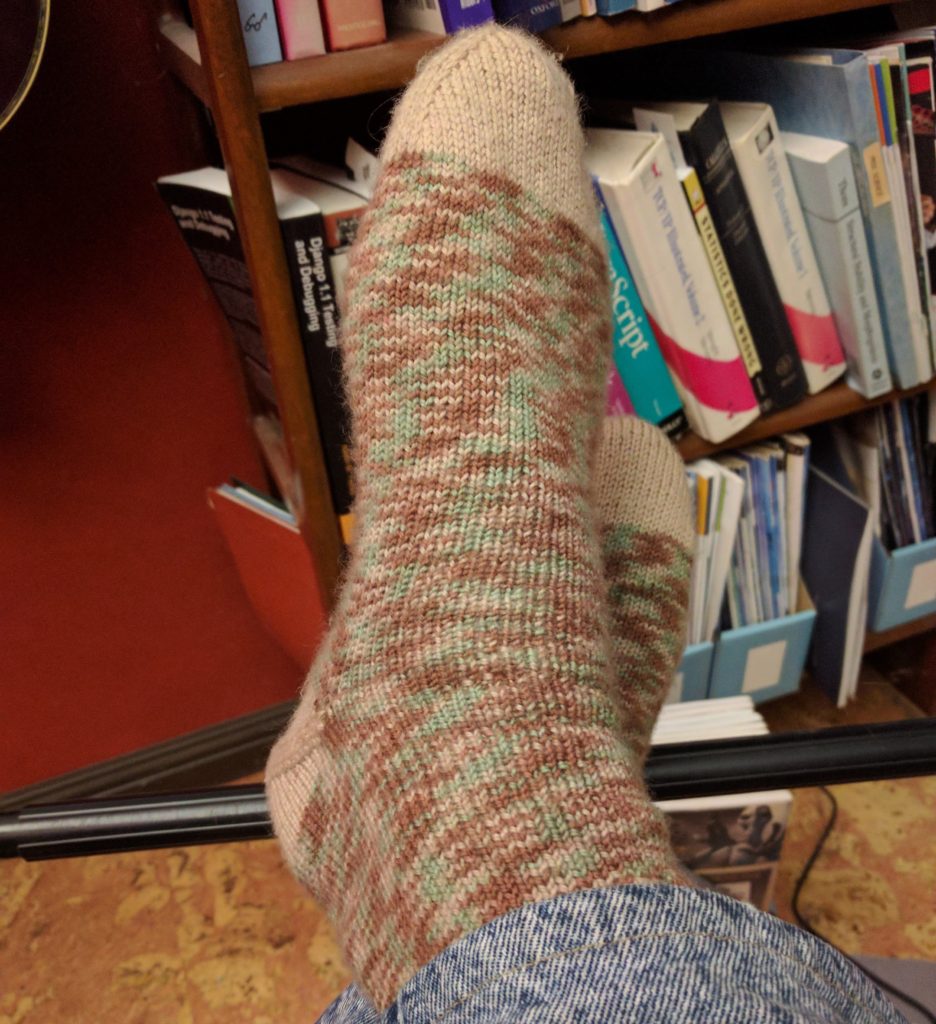Happy New Year 2019
Happy new year! If you are a regular reader of my blog, I apologize for the long period of silence this fall. This year I started teaching again in a 50% teaching position which seems to take 70% of my time! I have really enjoyed being back in the classroom and I’m lucky to be working at a small school where I get to spend time with both younger and older students!
Now that my routine has settled there, I’m hoping to get back to regular blogging. So let me catch you up on the knit-worthy goings on in the last three months!
I’ve been continuing to teach classes at Knit Sew Make, a teaching studio I started in the spring of 2018 with two other fiber artists. For January and February, I’m teaching a Knitter’s Workshop class for self directed projects and a Crochet Mandalas class. Check out our class registration website for a list of all our classes.
I also used my Erlbacher Gearhart hand crank sock machine to make over 50 items for our local Homeless Garden Project Holiday Store that benefits programs for the homeless here in Santa Cruz, CA. I learned even more about what my sock machine can do and I’m planning to release some checklist style patterns for circular sock machines this spring.
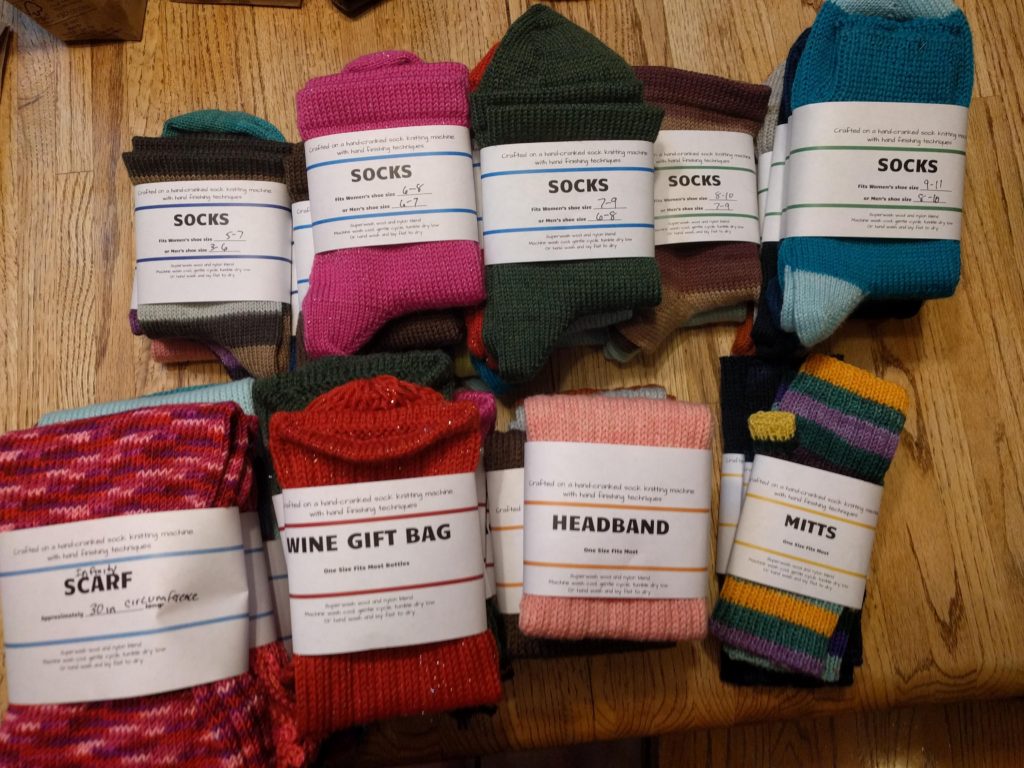
I was a participating designer for the Indie Design Gift-A-Long and I helped moderate the Hands forum this year. If you don’t know about this great event on Ravelry, join the group and keep your eyes open in late November 2019 for the beginning of the sale and Gift-A-Long. It’s full of friendly people and starts with a sale of patterns from literally hundreds of independent designers! I managed to complete three great patterns by other indie designers this year: I made several Sheep Tape Measure Covers by Justyna Kacprzak as gifts, I completed the Sunstone hat by Triona Murphy, and I made the Christmas Tree Wrap by handmade by SMINÉ.

I also have FOUR new patterns that came out this fall!

The Simple Colorwork Mitts are an easy to knit pattern in worsted weight yarn that have three choices of colorwork for the tops of the mitts.
Lernen is a fingering weight lace shawl. It’s perfect for beginning lace knitters as it gradually adds new stitches as you work the shawl.
Drachen is a oversized fit drop shoulder sweater that was published in Knitty Magazine. It features a colorwork dragon motif around the hem.
Finally, the Stripes of Many Colors Cowl is the perfect way to use up the mini-skeins from a yarn advent calendar or any collection of mini-skeins or leftover yarn. You’ll need about 135 yards of a contrast color to use throughout the cowl, but I think you will love the results!
In addition to the Gift-a-Long projects I completed, I also finished my Spanish Bay Cardigan, a pair of shortie socks that I gave as a gift, and my convertible poncho. I started the Judah Cardigan just last week.
So although I didn’t find time to write much here, it’s been a busy three months! You can also follow me on Instagram and on Facebook, where I often find time to make some quick updates!
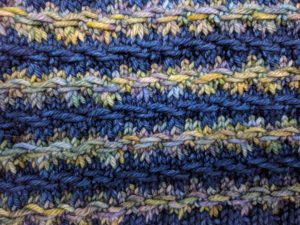 The last month has been a time of putting some projects on hold and ramping up others. Tomorrow I’m planning to publish the sixth in my
The last month has been a time of putting some projects on hold and ramping up others. Tomorrow I’m planning to publish the sixth in my 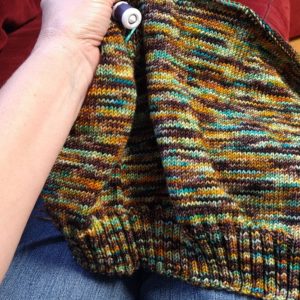

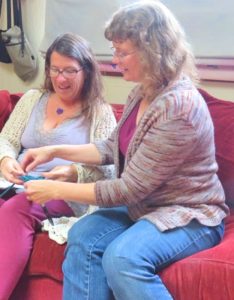
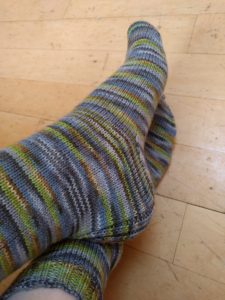 I did a lot of starting and finishing of smaller projects in March. I made a total of five
I did a lot of starting and finishing of smaller projects in March. I made a total of five 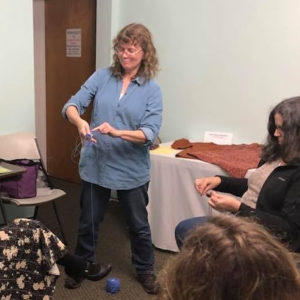 I also find that some students find more benefit to visual cues in diagrams, others find it easier to repeat a rhyme or catchphrase, and still others will learn best from mirroring my hands in motion. These preferences are often based on prior experience or work related skills. Because of this, I try to have at least three different ways to explain any skill in that I teach in a knitting class. Some of these I’ve developed by listening to how one student will explain a task to another student. Others have been gathered from watching other teachers and from reading a variety of books. A few have been created on the fly when no other explanation seems to work for a student and I’ve had to invent a new way to explain a task.
I also find that some students find more benefit to visual cues in diagrams, others find it easier to repeat a rhyme or catchphrase, and still others will learn best from mirroring my hands in motion. These preferences are often based on prior experience or work related skills. Because of this, I try to have at least three different ways to explain any skill in that I teach in a knitting class. Some of these I’ve developed by listening to how one student will explain a task to another student. Others have been gathered from watching other teachers and from reading a variety of books. A few have been created on the fly when no other explanation seems to work for a student and I’ve had to invent a new way to explain a task.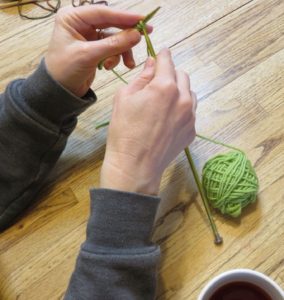 When I begin to develop a new knitting class (or any class, for that matter), I always start with thinking about what exact skills I want students to be able to accomplish when they leave the class. For instance, when I teach my Knitting 101 class in which students make
When I begin to develop a new knitting class (or any class, for that matter), I always start with thinking about what exact skills I want students to be able to accomplish when they leave the class. For instance, when I teach my Knitting 101 class in which students make 